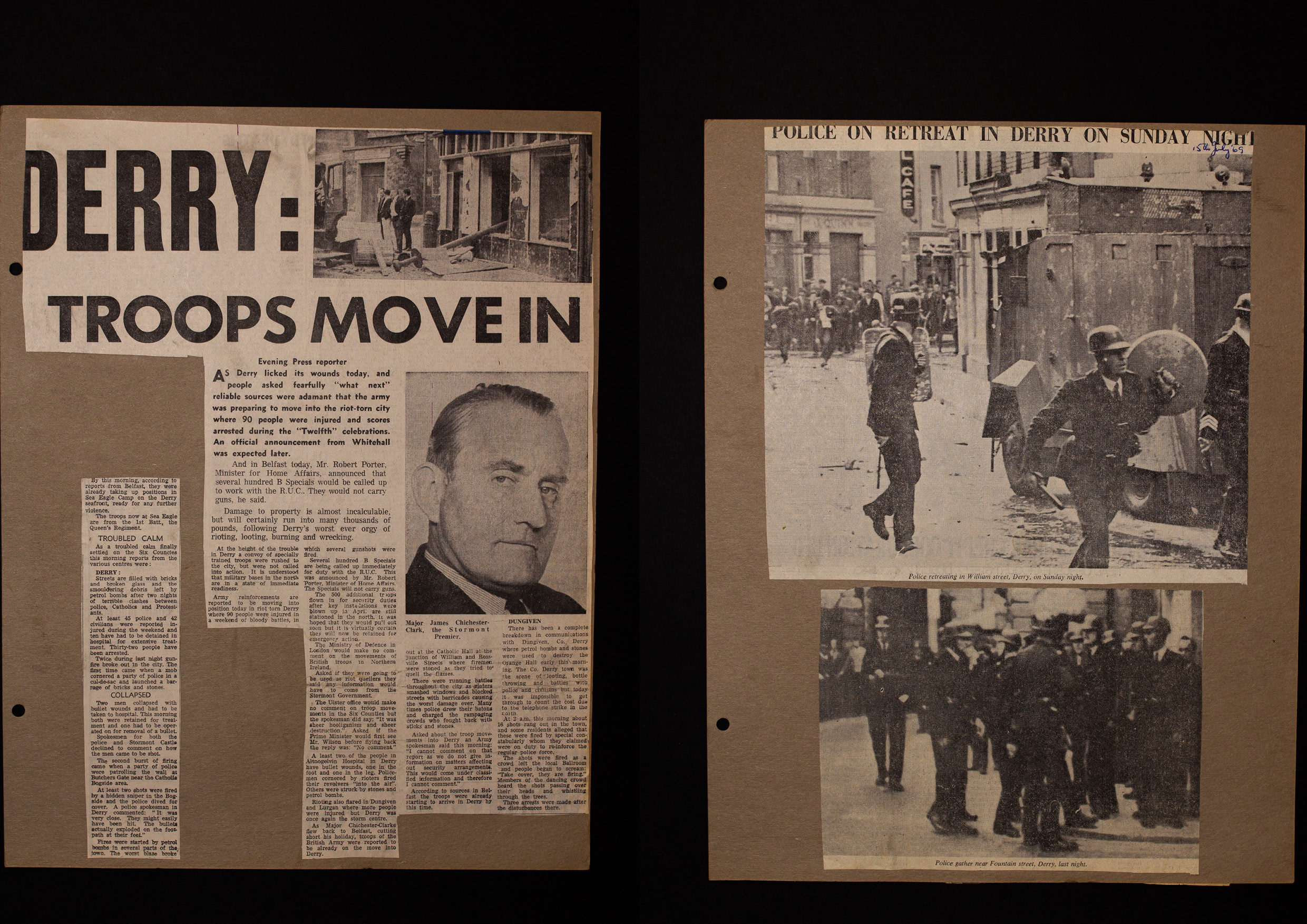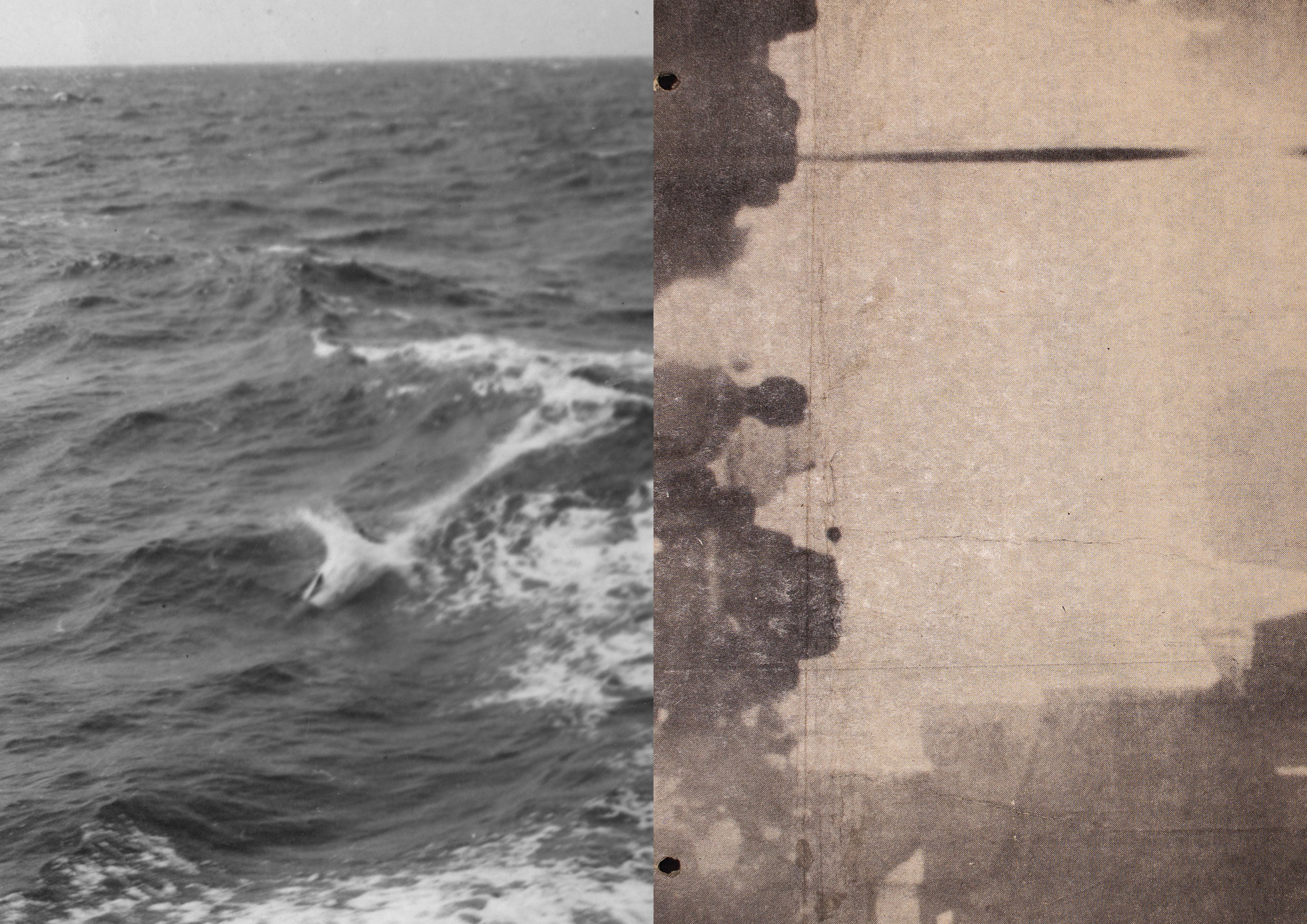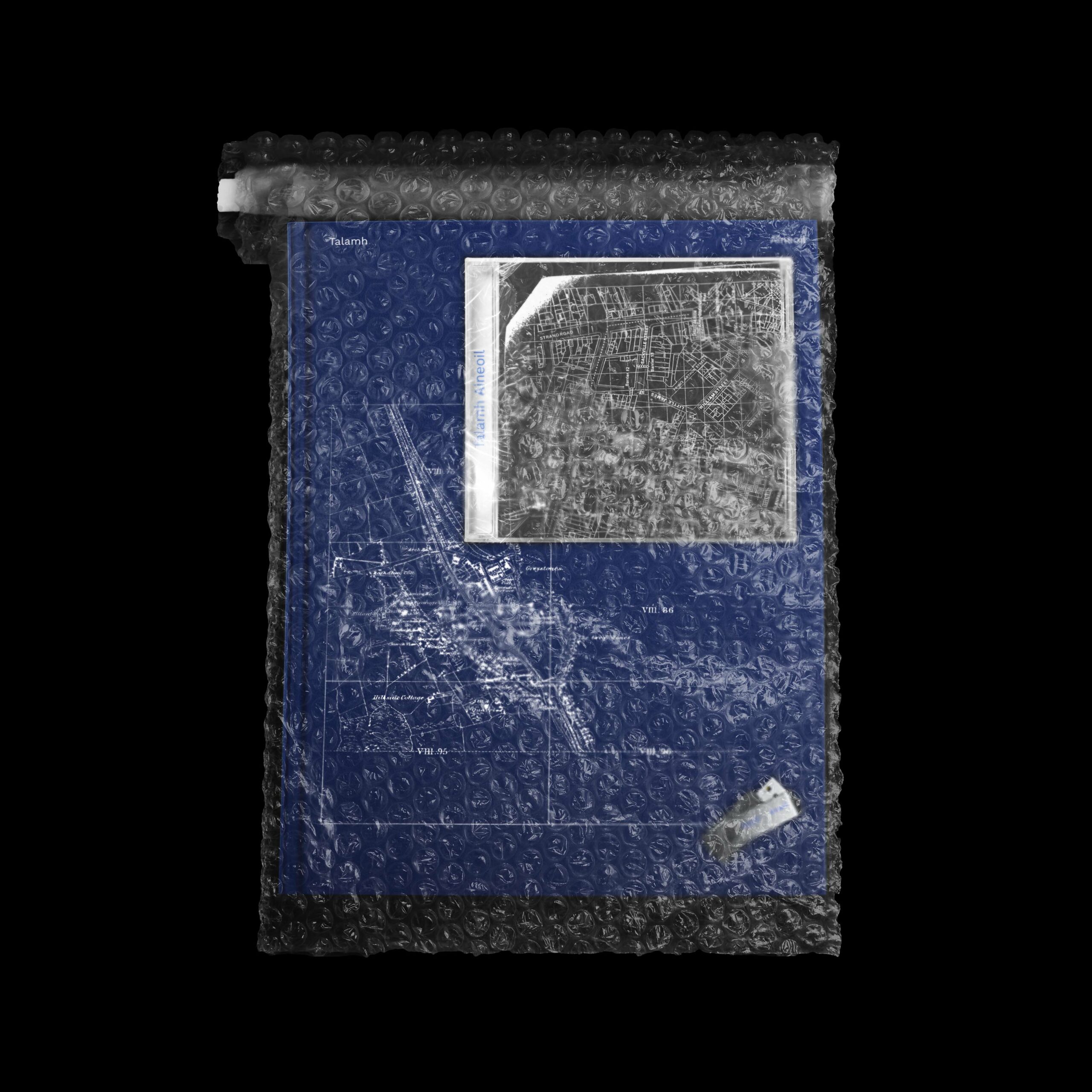
Talamh Aineoil
Can border identities be transgenerational?
Talamh Aineoil is a project which seeks to explore otherness located historically within border experiences of my family. The project is concerned with identifying historical moments at which particular sides of my family were at odds with one another and the formation of border identities as a means of locating the epicenter from which these internal borders first began.
My interest within this project stems from my experiences of being a part of sub cultural groups including Graffiti, Hip Hop, Skateboarding and club culture. It also stems from my family history and its experiences within the northern Irish context of the troubles.
My Mothers family have a history of public service and careers in the Irish navy and British army. My Fathers family have a history of a wider ranging mixture of careers from cattle dealers to photographers and leading Irish literary writers. While it’s safe to say that both sides of my family consider themselves Irish, my fathers side were directly involved in the Civil rights movement of Northern Ireland and experienced first hand the oppression of British colonialist forces as Catholics living in Derry. There is of course the outlier of my mothers family, who served as a member of the British paratrooper regiment and served for a period during the troubles of Northern Ireland. There is therefore a moment in history at which point certain members in either side of my family were at war with one another.
This historical opposition and oppression by way of colonialist forces has led to a history of border thinking. Mignolo and Tlostanova term Border thinking as “the epistemology of the exteriority; that is, of the outside created from the inside” and is closely linked to the individuals heterogeneous experiences of the border. It’s important to note at this stage that the intent of this project is not to attempt to theorise what border identity and border thinking is but rather to extrapolate how historically located border thinking located within my family's past has resulted in my experience of ‘otherness’ and ‘double consciousness’.
This ‘otherness’ and ‘double consciousness’ manifested within myself as a feeling of not quite fitting in or feeling normal in what would be considered normal social circles which brought me to explore the sub cultural worlds I have experienced and have been a part of and has played a central role in how I operate as a Designer, Visual communicator and person. The resulting project is intended to critically and ontologically examine my familial history, its relationship to itself, colonialist forces and the resulting border identities and border thinking located in my families past. Through this I hope to be able to trace a thread of border thinking, identities and otherness through time which locates itself within me in the present.
My research was largely focused on border thinking and border identities, in particular how border thinking communicates the experience of otherness in relation to being a border. The French psychoanalyst Andre Green writes that “the border of insanity is not a line; it is a rather vast territory with no sharp division: a no-man’s-land between sanity and insanity.” For Green the borderline (in a clinical sense) is not a line but rather “an entire field whose borders are vague” This vaguely bordered field results in an identity which is “located between self-defense and pro-activeness, characterised by instability and uncertainty, and fraught with the absence of singular belonging”
Similar to Green’s concept of ‘no-man’s-land’ is the experience of a ‘double consciousness’, a term coined by W. E. B. Du Bois writings on his experience while living in the United States as an African American. For Du Bois ‘double consciousness’ was the specific psychological experience of “always looking at one’s self through the eyes of others” (others being white, racist society of America in the early 1900’s). Recently the concept of a ‘double consciousness’ has been expanded and adapted more widely to social situations including border thinking and border identity concepts.(see Mignolo) Therefore there is a connection to be made between what Green termed ‘no-mans-land’ and W. E. B. Du Bois ‘double consciousness’. As Mignolo states “double consciousness is border thinking and border thinking is double consciousness... Border thinking is always pluri-topic and engendered by the violence of the colonial and imperial differences.”
A large part of this project is both informed by and created from the collection (or lack) of archival objects in the form of documents, newspaper clippings and archival film. Much of the collected pieces of documents, newspaper clippings etc are from archives which my grandmother, great aunties and uncles collected throughout the years pertaining to the troubles and other historically significant moments in both families histories.
My Grandmother Eilish (on my fathers side) accumulated a very large amount of newspaper clippings from a range of print sources during the time of the troubles, including clippings from very early on pertaining to the beginning of the civil rights marches that were happening in Derry. There is also a substantial collection of clippings that detail in depth the changing political landscape in both Northern Ireland, The Republic of Ireland and Britain. There is also a collection of community printed magazines and documents, designed to inform residents of local communities of ongoing situations in a political and social sense with regard the the troubles.
The lack of collected documents and objects from my Mothers side of the family is representative of the real absence of documentation of members of my family, aside from the occasional piece of documentation there is a surprising lack of historical objects (I’m sure in part due to the relatively small size of my Mothers family). During my research process I was unable to recover anything at all except some small snippets of home VHS footage of my previously mentioned great uncle Brian who served in the British military, one can only assume that this is in fact not accidental. Given Brian left Ireland early to serve in the military abroad and that he was evacuated from Ireland under threat of his life, any documentation appears to have been scrubbed from history or in fact never existed in the first place.
The size difference between my Mother and Fathers historical family documentation is somewhat surprising. You could assume that a family such as my Mothers with military careers would have readily available and easily accessible documentation about what they did, where they went and who they were but that is not the case. You could also assume that there would in fact be a lack of documentation, historical artifacts etc from my Fathers family due to the nature of the family being largely Republican/Nationalist in the Northern Irish context, but I quickly found that the opposite was true. In reality my Mothers family have very little documentation and historical artifacts available, my Fathers family have a huge selection. This is as a result of the border thinking identities within the family.
A dual screen approach was chosen to create a pluri-narrative piece with the intent of representing the different sides of my family, by applying a dual screen approach within the ontological framework of the project the viewer will actively construct meaning out of and between each of the pieces of film through the form of metonymy.
This method of inter relational meaning making through association is critical to the context of the project as it relates to the method through which I have made meaning from my families histories and stories and therefore is representative of the ‘double consciousness’ and ‘otherness’ which I have experienced as a result of border thinking and border identities. This creation of meaning between the dual screens works to create a third invisible space, one where meaning is made and the film is understood ultimately from my own bordered position.
For the purpose of the exhibition the film was shown on two separate screens on either side of a 6M long and 2M wide, darkened room. The intention of this is to place the viewer directly between the two narratives of my family, directly in the space where meaning is created and ultimately in my position of being a border between either narratives and histories. The result is a feeling of otherness and double consciousness, trapped between two often opposing and conflicting narratives.
The intention of this publication is to make visible the alternative methods of knowledge collecting, rituals etc associated with border thinking and identities and contrast it with the non border identities and thinking of my mothers family. this is done in order to highlight the alternative methods of archiving and collecting of information as record keeping and personal histories visible in my Fathers family archives.
The collected documents, objects & pieces of information are collated, arranged and displayed to allow the viewer to create meaning through the relationship between the objects on the page, what becomes apparent is that my fathers family have a much larger and more visible history which over time has been far more accessible. The result of this type of collecting of history has resulted in a strong sense of continuation of border identity and thinking located within myself.
Speculative packaging for a pack containing the book, a USB drive and CD containing the film.





















